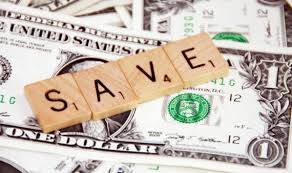 Are you always trying to find a way to eat healthy on a budget? Do you need to learn how to stretch your food dollars each week? There are always things that can be done when working with a food budget it’s just about knowing how to get to the end result of savings each and every time you shop. There are, of course, 3 main steps to help you get there each time: plan, appropriate prices and meal preparation such as preparing once and eating three times. Prepare your list ahead of time you shop and try not to deviate from it.
Are you always trying to find a way to eat healthy on a budget? Do you need to learn how to stretch your food dollars each week? There are always things that can be done when working with a food budget it’s just about knowing how to get to the end result of savings each and every time you shop. There are, of course, 3 main steps to help you get there each time: plan, appropriate prices and meal preparation such as preparing once and eating three times. Prepare your list ahead of time you shop and try not to deviate from it.
Here are 10 tips to keep you eating healthy even on a budget:
1. Plan, plan, plan! – before you head to the grocery store and/or health food store plan your meals for the week. Include meals like stews, casseroles, or stir-fries to help stretch the expensive items into more portions. Check to see what foods you already have and make a list to buy the ones you need.
2. Get the best price – check your local newspapers, online and at the store for sales and coupons. Ask about a loyalty or reward card for extra savings at the stores you shop in. Look for specials or sales on items that you have listed.
3. Compare and contrast – locate the unit price on the shelf directly below the product and use it to compare different brands and different sizes of the same brand to determine which one is more economical.
4. Buy in bulk – it is almost always cheaper to buy foods in bulk. Smart choices are family packs of items that can be frozen and used at a later date. Remember to make sure you have the freezer space for bulk frozen foods.
5. Buy in season – buying fruits and vegetables in season can lower the cost and adds the freshness. If you aren’t going to use them right away, buy some that still need time to ripen.
6. Convenience costs… go back to the basics – convenience foods like frozen dinners, pre-cut vegetables, instant rice, instant oatmeal, or grits will cost you more than if you make it from scratch and should not be on your list. Always select fresh! Schedule the time to prepare your own foods and save money.
7. Easy on your wallet – certain foods are typically low-cost options all year round. Try beans which are less expensive and provide lots of protein, carrots, greens or sweet potatoes and fruit such as apples or bananas are also good to select.
8. Cook once and eat all week – prepare a large batch of favorite recipes on your day off. Freeze in individual containers. Use them throughout the week and you will not have to spend money on take-out meals.
9. Get your creative juices flowing – spice up your leftovers by using them in new ways. Try leftover vegetable stir-fry, quinoa with vegetables such as mushrooms or your can top your garden salads with colorful raw vegetables. Remember throwing away food is throwing away money.
10. Eating out – restaurants are expensive so if you must go save money by getting the early bird special or going out for lunch instead of dinner or look for “2 for 1” deals. Stick to water instead of ordering other beverages which will add to the bill.
Are you looking for help in finding the right lifestyle design for you? If so, contact me today I can help!
Visit my website to learn more about nutrition here. Read more of my articles here at my blog.
Mavis Kelley, CHHC, AADP is a Certified Integrative Health and Wellness Life Coach specializing in nutrition, health, well-being, fitness and lifestyle design. For more information or to schedule a breakthrough session, please contact her at: Mavis@nspirehealthyliving.net or visit her website at: http://NspireHealthyLiving.com.


